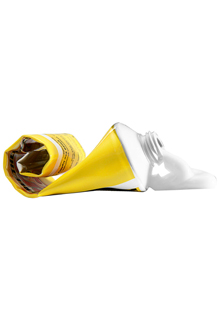Do Topical Creams Work?

Photo: Olivia Barr
In 2007 Americans spent more than $284 million on pain relief creams, hoping to ease achy joints and sore muscles. But there's a nagging question: Do they work?
It depends. Three ingredients frequently turn up in topical analgesics: counterirritants such as menthol or camphor; capsaicin, a derivative of hot peppers thought to disrupt pain signals; and salicylates, compounds found in some nonsteroidal anti-inflammatory drugs (NSAIDs).
Evidence has clearly shown that counterirritants work only as a distraction. The heating or cooling sensation makes you focus on your skin more than the pain, says Martin Underwood, MD , vice dean of Warwick Medical School in London.
Capsaicin can help relieve the pain of arthritis and neuralgia, but it can take days of use before patients benefit. "I tend to recommend NSAID cream," Underwood says. As the lead author of a 2007 study, he found that such creams were just as effective in treating chronic knee pain in older people as the same drugs taken orally.
NSAID creams can ease sore muscles as well, says biochemist and physician Delmas J. Bolin, MD , PhD, head team physician at Radford University in Virginia: "Any product containing salicylate can be pretty effective."
Keep reading: Twitter: Now saving lives?
It depends. Three ingredients frequently turn up in topical analgesics: counterirritants such as menthol or camphor; capsaicin, a derivative of hot peppers thought to disrupt pain signals; and salicylates, compounds found in some nonsteroidal anti-inflammatory drugs (NSAIDs).
Evidence has clearly shown that counterirritants work only as a distraction. The heating or cooling sensation makes you focus on your skin more than the pain, says Martin Underwood, MD , vice dean of Warwick Medical School in London.
Capsaicin can help relieve the pain of arthritis and neuralgia, but it can take days of use before patients benefit. "I tend to recommend NSAID cream," Underwood says. As the lead author of a 2007 study, he found that such creams were just as effective in treating chronic knee pain in older people as the same drugs taken orally.
NSAID creams can ease sore muscles as well, says biochemist and physician Delmas J. Bolin, MD , PhD, head team physician at Radford University in Virginia: "Any product containing salicylate can be pretty effective."
Keep reading: Twitter: Now saving lives?



